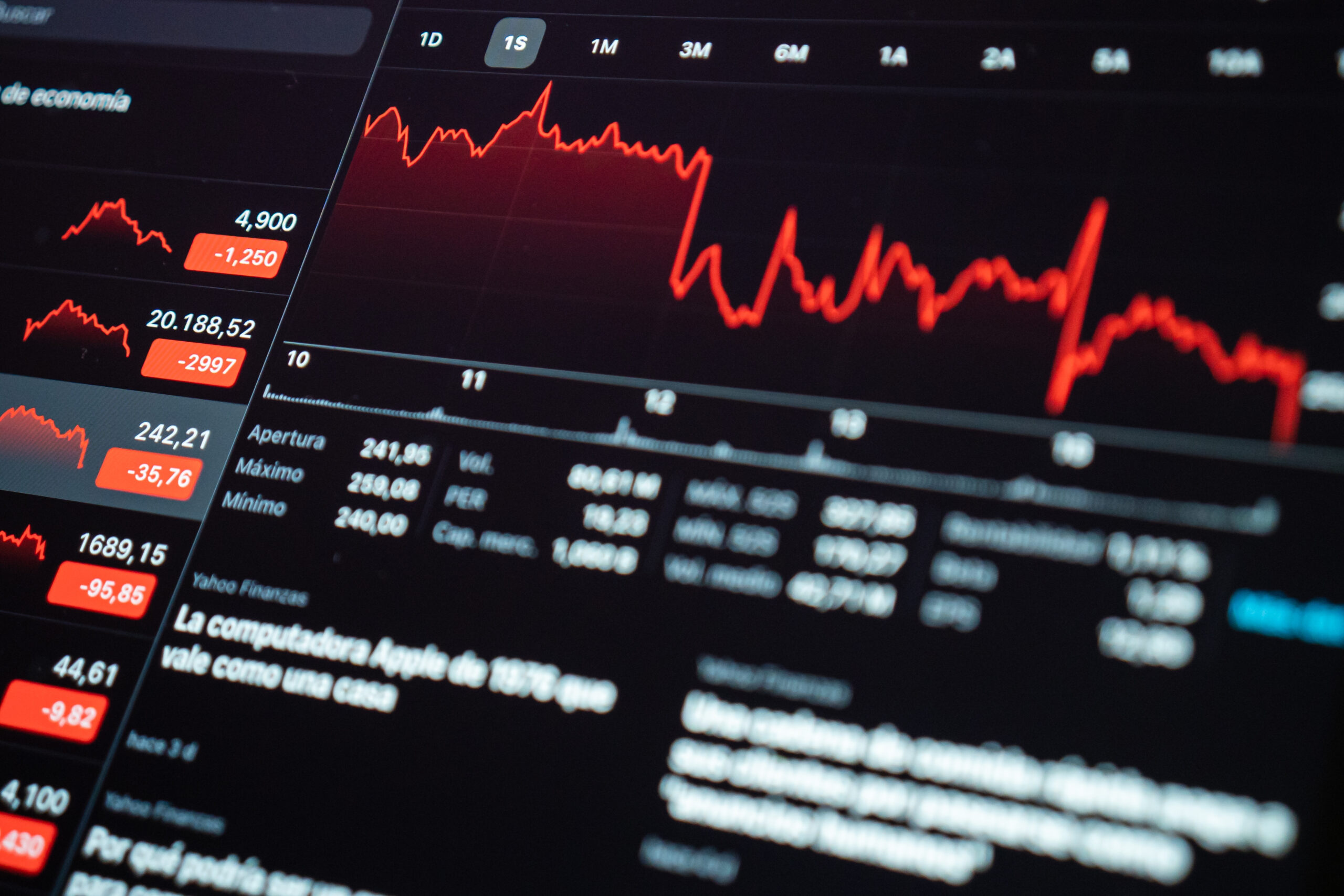News Feed
Pahalgam Terror Attack: Two Kashmiri Men Who Went to Pakistan in 2018 Suspected Among the Terrorists Who Killed Tourists

The Pahalgam terror attack shocked the people of Jammu & Kashmir and the entire country in April 2023. This brutal strike took place in Baisaran, a beautiful spot also known as ‘mini Switzerland.’ At least 26 civilians, mostly tourists, lost their lives in this attack. The event shook the local community and drew attention from across India and the world because of its cruelty and impact on regional security.
Table of Contents

Pahalgam Terror Attack LIVE: Many Dead
What Happened in the Pahalgam Terror Attack?
In April 2023, terrorists targeted the busy tourist area of Baisaran in Pahalgam. The attack happened during the peak tourist season, aiming to cause fear and disrupt the local economy. Most victims were visitors enjoying the stunning landscape of Jammu & Kashmir. The group behind this deadly strike is The Resistance Front. This outfit is linked to Lashkar-e-Taiba, a well-known militant group. They took responsibility for the attack, showing the ongoing risks of terrorism in the region.
Key Facts of the Attack
- Date: April 2023
- Location: Baisaran, Pahalgam, Jammu & Kashmir
- Deaths: 26 civilians, mostly tourists
- Perpetrators: The Resistance Front (linked to Lashkar-e-Taiba)
This attack was meant to send a strong message against peace and tourism in Pahalgam. The goal was to hurt the local economy that depends heavily on visitors.

Pahalgam Terror Attack explained: What led to the tragic incident For a detailed timeline and background, see the Wikipedia summary of the 2025 Pahalgam attack, which provides an overview of the incident, including casualties, perpetrator affiliations, and motives related to the revocation of Jammu & Kashmir’s special status.
Suspicion Falls on Two Kashmiri Men Linked to Pakistan
New information from the investigation reveals that two Kashmiri men who had traveled to Pakistan in 2018 may be involved in the attack. These men are suspected terrorists connected to the shooting that killed many innocent people. The exact details about these men are still being kept secret. Their possible ties to Pakistan underline the long-standing challenge of cross-border terrorism in Jammu & Kashmir.
Who is Investigating?
- The National Investigation Agency (NIA)
- Jammu & Kashmir local police
Both agencies work closely to find out who planned the attack, how it was carried out, and who else might have helped.
How Did the Government and Security Forces React?
After the Pahalgam terror attack, the government acted quickly to bring justice and stop other attacks. The response was strong and solemn.
Important Visits and Statements
- Home Minister Amit Shah came to Srinagar to meet victims’ families and survivors. His visit showed the government’s support to those affected.
- Prime Minister Narendra Modi cut short his trip abroad to address the nation. He said, “Bharat will not bend to terror,” making it clear India will fight terrorism firmly.

Father-Son Duo Among 26 Killed In Pahalgam Terror Attack
Government Response Coverage
For continuing updates and government actions following the attack, NDTV’s live coverage provides thorough insights: Kashmir Terror Attack Updates. Further, Union Home Minister Amit Shah condemned the attack strongly, emphasizing that India will not tolerate terrorism. More details can be found in this article from The Economic Times.
Security Enhancements
- Heightened alert levels nationwide, with particular vigilance near international borders.
- Increased intelligence-sharing and surveillance to prevent future attacks.
- Deployment of additional security personnel around tourist hotspots in Jammu and Kashmir.
International Reaction and Social Media Response
The attack led to worldwide condemnation and a flood of support for the victims.
Reactions Around the World
- Nepal’s Prime Minister KP Sharma Oli expressed solidarity and sent condolences.
- Many world leaders voiced support for India and condemned terrorism.

Kashmir Terror Attack: World Leaders Condemn Terrorist Violence
Voices on Social Media
- Social media platforms overflowed with messages condemning the attack and expressing condolences.
- News channels and YouTube content creators covered the incident extensively, helping keep public focus on safety and awareness.
If you want to grasp the emotional and social media impact through news reports and broadcasts at the time, these live visual coverage snapshots capture the evolving situation well.
The Effect of the Pahalgam Terror Attack on Tourism and Peace
Pahalgam is famous for its natural beauty and draws tourists from across the world. After the attack, the tourism industry faced a sharp decline.
Major Impacts on Tourism
- Tourist arrivals dropped sharply following the attack.
- Security checks at tourist places became stricter to ensure safety.
- Local business owners requested government support to help the tourism sector recover.
- Authorities launched campaigns to rebuild traveler confidence with enhanced security measures.

The Hindu reports sustained interest from tourists despite security concerns Tourism is key for Pahalgam’s economy. Those working in this sector hope to restore the area’s peaceful reputation soon.
Looking Ahead: Hope and Vigilance
The Pahalgam terror attack reminds everyone that terrorism still threatens Jammu & Kashmir. The suspicion about the two Kashmiri men connected to Pakistan adds urgency to the ongoing investigations. The Indian government’s quick actions, along with international support, show a strong will to bring the culprits to justice. The focus remains on restoring peace to Pahalgam and ensuring the safety of its people and visitors. News
What Can We Learn?
- Terrorism continues to be a threat that needs constant attention and strong action.
- Cooperation between agencies, communities, and countries is critical in fighting terror.
- Supporting victims and local economies is vital after such attacks.
- Building trust and safety for tourists will help Pahalgam heal and thrive again.
As security improves and peace returns, Pahalgam’s beauty and warmth will welcome visitors once more. The hills and valleys await a new chapter filled with safety and calm, far from the shadow of terror.
Further Reading and Analysis
For an in-depth perspective on the broader implications of the Pahalgam attack and the ongoing militancy in Kashmir, the Lowy Institute provides a detailed analysis:
Terrorist Attack Marks Grim Kashmir Milestone For reflections on the fragility of peace and the necessary policy shifts, see the opinion piece from Indian Express:
Pahalgam Terror Attack: Grave Reminder That Peace Is Vulnerable
News Feed
US Stock Futures Fall After Trump Says 20-30% Tariffs a Year from Now Would Be a Victory

US Stock Futures React to Tariff Talk
US stock futures are always quick to react to trade talk. Recently, comments from former President Donald Trump on tariffs caused waves in the market. He said a 20-30% tariff set a year from now would count as a win. That line made investors uneasy. Still, the market didn’t all move the same way. It depends on the bigger trade picture and what other signals come from policymakers. On April 23, 2025, US stock futures moved higher. Trump mentioned tariffs on Chinese goods might be lower than feared. This eased some worries. Dow futures surged 1.7%, S&P 500 futures jumped 2.3%, and Nasdaq 100 futures climbed 2.8%. Investors cheered the hope that trade tensions would ease soon. Tech and chip stocks led the rise. Stock futures show early moves before the market opens. They help traders and investors spot how news about trade and tariffs could affect stocks. When trade talks heat up, futures often move fast, showing changes in mood tied to US trade decisions.
Table of Contents

US stock futures rise after three-day losses, reflecting shifting investor sentiment amid trade developments. Before diving deeper, watch this video for an insightful breakdown of how US stock futures react amid ongoing trade tensions and tariff discussions:

U.S. stock futures rise despite confusion over Trump tariff exemptions – YouTube
Timeline of US Stock Futures and Tariff News
April 23 Rally: Good News on Tariffs
On April 23, futures climbed after Trump said tariffs would be “substantially lower” than some scary guesses of 145%. This news lifted futures in big indexes, especially tech stocks. Intel jumped 6%. That helped raise other chip stocks too. Even gold took a hit. Prices dropped 3.5% to $3,300 per ounce. That drop means traders felt more confident in stocks and less need for safe places to park money.

Stock futures today: Live updates reflect positive market reaction to tariffs news.
Early April Sell-Off: Fear Takes Over
Back on April 8, stock futures dropped hard. News of tariffs hitting 86 countries made the market panic. The S&P 500 fell for four days straight, losing 12% of its value. This showed how sensitive futures are to tariff talk. When tariffs look like they could start a trade war, traders often sell fast. Volatility spikes and futures markets swing quickly as investors try to protect their bets.

U.S. stock futures in freefall ahead of market open, illustrating the impact of tariff fears.
What Moves US Stock Futures the Most?
Several things move futures around when tariffs come up:
- Trade policy news: Any talk of raising or cutting tariffs hits futures hard. Investors try to guess what tariffs mean for company profits and supply chains.
- Tech and chip stocks: These sectors feel tariffs on China’s goods more. Their futures jump or fall based on tariff fears.
- Federal Reserve moves: Interest rates and Fed talk also matter. For example, Tesla’s $206 price point acts as a key level watched during tariff shifts.
- Safe havens: When futures drop, gold and bonds usually rise. When futures rally, safe-haven demand falls.

Market snapshot showing live movement in U.S. stock futures.
Social Media’s Role in Futures Sentiment
Social media and YouTube have become key for traders tracking stock futures. These platforms spread news and analysis fast:
- On YouTube, people break down Fed policy and tariffs. They look closely at how these affect tech and chip stocks.
- Twitter and Reddit buzz with ideas on futures moves. Tesla’s $384 resistance level, for instance, sparks speculation tied to futures trades.
- Tariff news often causes rapid mood swings on social media, pushing futures up or down in minutes.
Traders who watch these platforms can spot moods changing before markets open.
What’s Next for US Stock Futures?
Trump’s talk of a 20-30% tariff next year is just speculation now. Still, futures remain sensitive. Traders need to watch:
- Real-time futures prices and charts on sites like TradingView.
- Official updates on tariff timing and trade talks.
- How tariff changes impact different sectors, mainly tech and manufacturing.
US stock futures move fast with tariff news. Watching them helps investors prepare for market swings and manage risk.
Tracking stock futures gives a quick read on how trade talks affect markets. While futures bounced back after Trump’s comments, tariff uncertainty means ups and downs could keep coming. Staying informed is key to navigating markets tied to trade policy shifts.

News Feed
Why is Stock Market Down Today? BSE Sensex Crashes Over 1,000 Points; Nifty50 Below 23,950

The stock market is down today, hitting investors with a sharp drop. The BSE Sensex has crashed by more than 1,000 points. At the same time, the Nifty50 has slipped below 23,950. This sudden fall has raised questions among investors, stock buyers, and students trying to understand the market trends. Several global and domestic factors have combined to push the market lower.
Table of Contents

An infographic illustrating the basic concept of the stock market and how it functions.
What Is Causing the Stock Market to Fall Today?
Global Market Trouble
A key reason for the stock market falling today is the trouble in global markets. The United States has imposed new tariffs on many imported goods. These higher tariffs raise worries about a growing trade war. Such fears lead to unstable markets worldwide. Emerging markets, like India, are not safe from this impact. Investors around the world are worried about slower economic growth and political tension. This has caused many to sell stocks and reduce risk. The ongoing trade disputes show that the global economy is still fragile. Investors are cautious and are cutting down on stocks, especially in sectors that depend on trade.
U.S. Tariffs and the Impact on Indian Stocks
The U.S tariffs have a direct effect on India. Indian exports now face a steep tariff of about 26%. For China, the tariff is even higher at 34%. These extra costs reduce the profit potential for Indian exporters. As a result, companies that sell goods abroad face setbacks, leading to negative feelings in the stock market. Higher tariffs hurt India’s trade balance. They also raise concerns about how long the trade conflict might last. This uncertainty hurts investor confidence and adds pressure on the stock market today.

Historical perspective on stock market crashes shows how unpredictable and impactful these events can be. For a visual explanation of the situation specifically in India, you may find this video helpful:
Watch: Why is Stock Market Crashing in India | Explainer
This video explains why the Indian stock market is experiencing downturns, highlighting factors like continuous foreign funds withdrawal and declines in key sectors like banking, metals, auto, and IT.
Why Are Small and Midcap Stocks Falling More?
In India’s market, the drop is broad but small and midcap stocks have taken the hardest hit. These stocks usually change prices more sharply and react quickly to bad news. Many of these companies depend on exports, so the new tariffs and global slowdown hit them hard. The fall in small and midcap stocks pulls the whole market down. It pushes the Sensex down by over 1,000 points and drives the Nifty50 below the 23,950 mark. This level is important because it is seen as a key support for the market.

Despite recent volatility, some indicators suggest the stock market remains fundamentally strong over the long term.
How Social Media Is Shaping Market Sentiment
On Twitter, LinkedIn, and other platforms, people are discussing the reasons behind the market drop. Many market experts share their views on the trade war and its effects on stock prices. The talk often focuses on the uncertain future due to ongoing global tensions. Investors are warned that market swings might continue for a while. While today’s fall is linked to current news, some believe it could mean a longer phase of lower confidence and slower market gains.
Expert Views and What YouTube Analysts Say
YouTube channels focused on finance have more viewers these days. Investors look for tips on how to handle the falling market. Experts say that market drops are a normal part of the investment cycle. They suggest:
- Holding a mix of investments to reduce risk
- Choosing companies with strong business models and growth chances
- Avoiding risky small and midcap stocks affected by tariffs
- Investing in mutual funds or index funds for steady, long-term returns
If you’re seeking a detailed analysis of why the market fell sharply today, this video provides clear insights:
Watch: Why Did the Stock Market Fall Today? | Faye D’Souza Explains
The video discusses the reasons behind a sharp dip in the Indian stock market, including profit booking, global trade uncertainty, and sector-specific declines.
What Should Investors Do Now?
Here are some clear steps for investors facing market dips:
- Stay updated: Watch news about global trade and tariffs. These will influence market moves.
- Don’t panic: Avoid quick selling in reaction to market falls. It can lead to losses.
- Think long term: Use the dip to find good buying options if you are prepared to wait.
- Seek advice: A financial advisor can guide your choices based on your risk level and goals.

Stock market data on digital displays illustrates the complex daily fluctuations affecting investor decisions.
Wrap Up
The sharp fall in the BSE Sensex and Nifty50 today shows how nervous the markets are. Trade tensions triggered by new U.S. tariffs have increased doubts among investors. These doubts hit stocks hard, especially exporters and smaller companies. While the current market drop is worrying, it is also a reminder to stay calm and keep a balanced view. Investors should focus on diversification and strong companies. By keeping an eye on global trade updates and avoiding panic, investors can protect their investments and look for future growth. Understanding why the stock market is down today helps investors and students alike make sensible choices. Staying informed and patient is the key to navigating through times like these.
For live updates on the market, you can also follow real-time reporting here:

News Feed
Despite Friday’s Crash, Sensex Is Up Over 5,000 Points from April’s Low. Time to Reconsider Your SIP Strategy?

The Sensex saw a sharp fall last Friday, dropping more than 700 points. Yet, it is still more than 5,000 points above its low back in April. This big rebound has many investors wondering if now is a good time to rethink their Systematic Investment Plan (SIP) approach. In this article, we will explain what happened in the market, what it means for SIP investors, and how you can make smart choices during this uncertain time.
Table of Contents

Sensex – Overview, History, Selection
What Caused the Recent Sensex Drop?
Last Friday’s fall caught many investors off guard. Here are the main reasons:
- Geopolitical tensions between India and Pakistan grew, making investors nervous.
- The Nifty index slipped just below 24,000, a key psychological level, but bounced back later.
- Some sectors like Information Technology showed strength even when the market overall was weak.
- Financial stocks helped steady the market during the rollercoaster day.
These events show that the market is still fragile. The Sensex reflects how investors feel about the economy’s future. STOCK FEED
Detailed Market Analysis of the April 7 Crash
On April 7, 2025, the Sensex plunged over 3,200 points intraday (4.29%) and closed down 2,227 points (2.95%), signaling a rapid selloff triggered primarily by global volatility. Factors such as Donald Trump’s tariff policies and fears of a US recession significantly influenced this downturn. Experts emphasized caution during this volatile period but advised investors to maintain their SIPs, banking on eventual stability and recovery (Times of India, April 7, 2025).
How the Sensex Bounced Back by Over 5,000 Points
Even with the drop last week, the Sensex has climbed more than 5,000 points since April. This shows there is strong demand for Indian stocks. Here’s why:
- The market’s quick rebound hints at confidence in India’s growth.
- Foreign Institutional Investors (FIIs) have been buying actively, giving more money to the market.
- The tech and financial sectors are leading the rise, which often hints at economic strength.
For people invested in the Sensex, this recovery is a good sign. But it also means caution is still needed.

How Sensex breached the 50,000-mark, showcasing its resilience over time.
Video Insight: April 7 Crash and the Path Forward
For an expert breakdown of the April 7 crash and what investors should watch for next, this concise video analysis explains the causes, sector-specific impacts, and why continuing SIPs might be beneficial despite the volatility. It highlights potential triggers for recovery, including policy reversals and US yield declines:

Click to watch: Indian Stock Markets Crash — Expert Analysis on Sensex Fall and Recovery
Should You Change Your SIP Strategy Now?
A lot of investors are asking if they should keep investing in SIPs when the market is so shaky. Let’s look at both sides:
Why Keep Your SIPs Running?
- Rupee-cost averaging: SIPs help spread out buying over time. This means you buy fewer shares when prices are high and more shares when prices fall.
- Long-term growth: Markets go up and down. If you stay invested over years, your investments tend to grow.
- Benefit from recovery: Since Sensex is well above April’s low, continuing your SIP captures this rise.
Reasons to Review or Adjust SIPs
- Geopolitical risks could keep the market volatile for longer.
- If your SIP focuses too much on risky sectors, you may want to spread out your investments.
- If your investment goal is short-term, you might think about safer options.
What Experts Suggest for SIPs During Volatile Times
- Keep your focus on the long term.
- Stick to your SIP plan instead of stopping during dips.
- Think about diversifying your SIPs into different sectors or asset types.
- Don’t react quickly to every bit of news. Stay calm and make slow, planned changes if needed.

The Sensex is a key benchmark index for measuring market sentiment in India, important for SIP investors to understand.
What Social Media and YouTube Say About SIPs and Sensex
Many investors turn to social media and YouTube for advice when the markets feel uncertain. Here are common messages:
- Social media communities say SIPs are a smart way to handle market ups and downs.
- On YouTube, experts explain how rupee-cost averaging works and why SIPs help build wealth.
- Influencers warn against panic selling and recommend sticking to your investment goals.
These voices agree that staying consistent with SIPs is often the best move, especially when markets are still in recovery.
How to Handle SIP Investments During Sensex Volatility
Here are some simple tips for SIP investors during uncertain times:
- Keep investing the same amount regularly. Market ups and downs will balance out over time.
- Look at your overall portfolio. If one sector has too much weight, consider adding others.
- Stay patient. Big gains usually come with time, not quick fixes.
- Keep learning about the market but avoid overreacting to daily market news.

Monthly trends of S&P BSE Sensex index illustrate the typical volatility and cyclical nature of the market.
Conclusion: Stay the Course but Be Smart
Even with last Friday’s big drop, the Sensex is still way above its April low. This shows the Indian market has strength. For SIP investors, the best step is to keep a steady hand. Don’t stop investing because of a short-term fall. Instead, stay focused on your long-term goals. Using SIPs means you buy shares regularly, which lowers risk during ups and downs. You can also spread your investment across sectors to avoid too much risk in any one area. Keep an eye on important news, but don’t let it drive you to quick decisions. The key to winning in the stock market is simple: be consistent, stay patient, and keep learning. This approach helps you grow your money even when the market looks shaky. By following these ideas, you can make your SIP strategy work for you. The Sensex may go up and down, but with smart planning, your investment journey can stay on the right track.
-

 Funds6 hours ago
Funds6 hours agoMutual Fund Investment 2025: Why Halting Your SIPs Doesn’t Make Sense Even During Market Dips
-

 Cryptocurrency3 days ago
Cryptocurrency3 days agoWazirX Plans User Compensation Post-Court Approval on May 13, 2025
-

 Cryptocurrency2 months ago
Cryptocurrency2 months agoPi Network Extends KYC and Mainnet Migration Deadline to March 14: Don’t Miss Out !
-

 News Feed1 day ago
News Feed1 day agoOpting for New Tax Regime? Check Out These 5 Benefits
-

 News Feed22 hours ago
News Feed22 hours agoUS Stock Futures Fall After Trump Says 20-30% Tariffs a Year from Now Would Be a Victory
-

 Funds23 hours ago
Funds23 hours agoChoosing Between Direct and Regular Mutual Funds: Which is More Beneficial 2025 ?
-

 Stock Market2 weeks ago
Stock Market2 weeks agoTata Trent: Buy, Hold, or Sell 2025 ? Exclusive News
-

 Cryptocurrency7 days ago
Cryptocurrency7 days agoSolaxy ICO Soars as New Dev Upgrade Drops – Best Meme Coin to Buy 2025?
